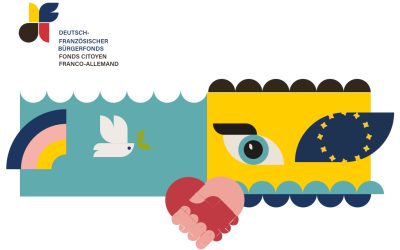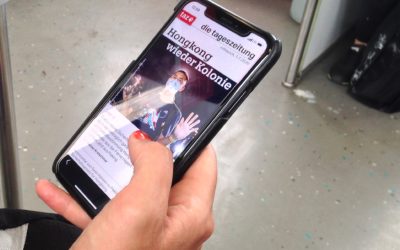BKF Online-Schulungs GmbH
Digital transformation improving the commercial license renewal process for logistic professionals.
The COVID-19 pandemic created unique needs for logistic companies and their drivers. The service of BKF Online-Schulungs GmbH provides digital solutions to solve a unique problem.
Visit: bkf-online-schulungen.de
BKF Online-Schulungs GmbH offers mandatory online training and tests required for the license renewals of commercial truck drivers. Up until the COVID-19 pandemic, this process was an offline process that took place in driving schools. Our task was to create an online solution that fulfilled legal demands defined by the EU and German governments.
A time and location-independent advanced training platform for professional drivers
BKF Online is a SaaS e-learning platform from BKF Online-Schulungs GmbH. Both the company and learning platform exists due to the COVID-19 pandemic. As driving schools had to close, commercial truck drivers could not complete the mandatory training required for their licence renewal process. The training platform BKF Online offers a decentralized and contactless solution for this issue. Users book, pay and complete learning modules independently and from any location.
Primary Challenges
- Gaining early momentum and acceptance in three user groups: We had to convince three different groups of people of the new e-learning platform: drivers, logistic companies and state inspection auditors. All user groups were accustomed to an established license renewal process. The online solution was a new concept requiring an introduction strong enough to change minds.
- Fulfil all legal requirements for state-approved training facilities: We had a long list of EU-wide requirements, which we had to fulfil for the platform to become state-approved and with that operational. One requirement was the legally admissible authentication and profile management of the drivers/students. Another requirement was fraud prevention.
Project Goals
- #1 Turn first-time users into immediate platform advocates. The benefits of the service had to be obvious, easy to understand and the process effortless, with a very high satisfaction rate for first-time users. It had to be so convincing that first-time users would share the service with their peers or help convince official bodies.
- #2: Check all the boxes to become a state-approved online training facility. All legal requirements had to be fulfilled and airtight. The driver identification and online learning process required a design that would make them legally unimpeachable.
- #3: Be ready to pivot in case goal #2 becomes unachievable. The legal situation in Germany at the time required in-person mandatory training modules completion. Classes took place with attending tutors and in driving schools, which state auditors could visit and inspect. We had to have a plan B ready to launch. A requirement for the Design System was to ensure scalability and provide room to pivot in case the legal status within Germany did not change on time for the launch.
Our UX Solutions
The mission was clear: we had to convince drivers, logistic companies and state inspection auditors that their accustomed process was a thing of the past. We had to convince them to try and love our solution. On top, the service had to fulfil a long list of state and EU-defined legal requirements to convince public authorities that we were offering a trustworthy, visionary solution which could simplify bureaucratic processes. Easy-peasy-lemon-squeezy.
#1 Finding opportunities the traditional process could never offer
While our user groups were very used to an established license renewal process, the existing process had downsides. The limitation that the pandemic hindered the process completion was temporary. We did not want to build on that but instead wanted to improve the permanent pain points of the traditional process. We had to get to know who our user groups were, identify their pain points and design solutions for these problems.
Qualitative user research is the best way to learn more about user groups. Another approach is to work with hypotheses and evaluate them after launch, which is what we did.
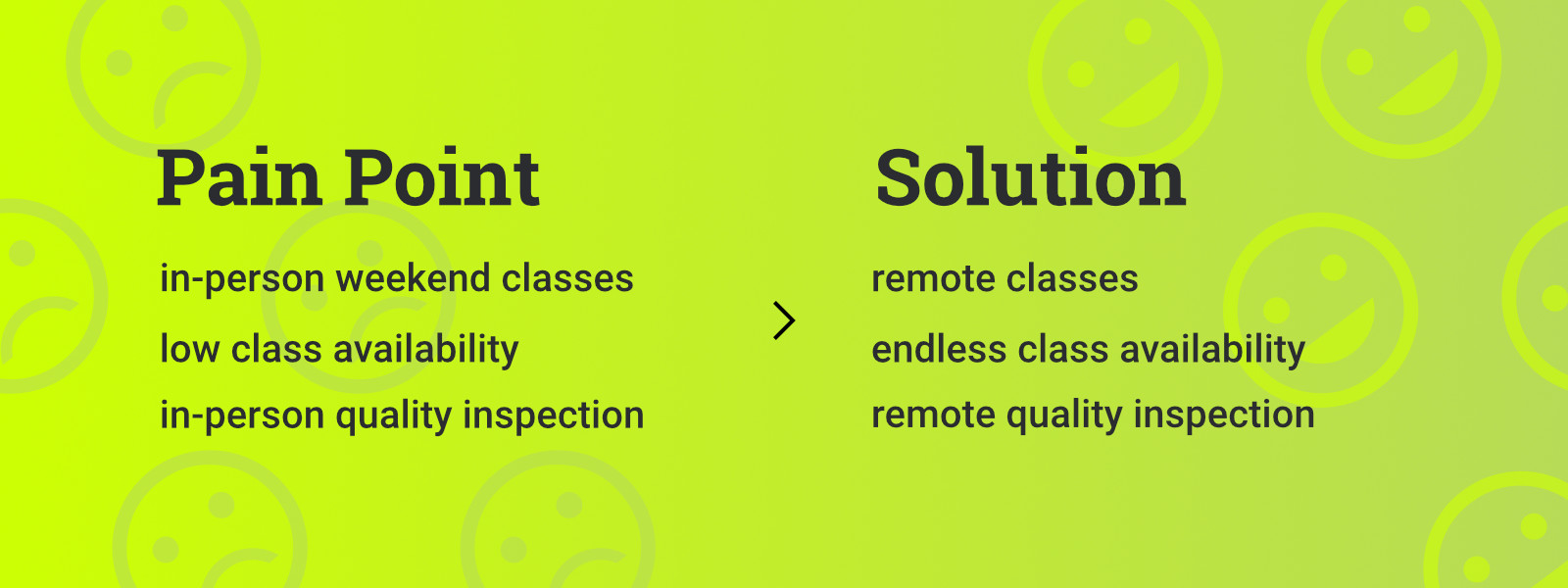
To convince people to leave the beaten track, you must deliver solutions for the most annoying obstacles on the set track.
We were trying to change a longstanding established process. We had to convince the That’s the way we’ve always done it – crowd. We had to convince a group of people with various affinity levels for technology. A seamless and intuitive interaction design can improve the general acceptance of a new service. But for people to try something new, their benefits must stand out.
We focused on features that would benefit convenience and process transparency, making the lives of drivers, logistic companies and state inspection auditors equally easier. One obvious benefit for drivers was decentralized training, enabling them to participate and graduate anytime and anywhere. Logistic companies benefitted by not having to find open training spots at driving schools for their employees. Our planned benefit for auditors was a login profile allowing them to inspect companies and drivers conveniently without the need to travel to training facilities.
#2 Removing barriers during onboarding, learning and payment processes
While the student authentication process had to be bullet-proof and comply with EU law, we did not want it to stand in the way of site exploration or finding and starting training modules. We wanted to allow students who were still undecided to explore and try the service before fully committing. We did not want to hinder students who did not have the required documents or information for identification on-hand from starting a training session. Our solution was to make authentication only mandatory when drivers wanted to download training certifications.
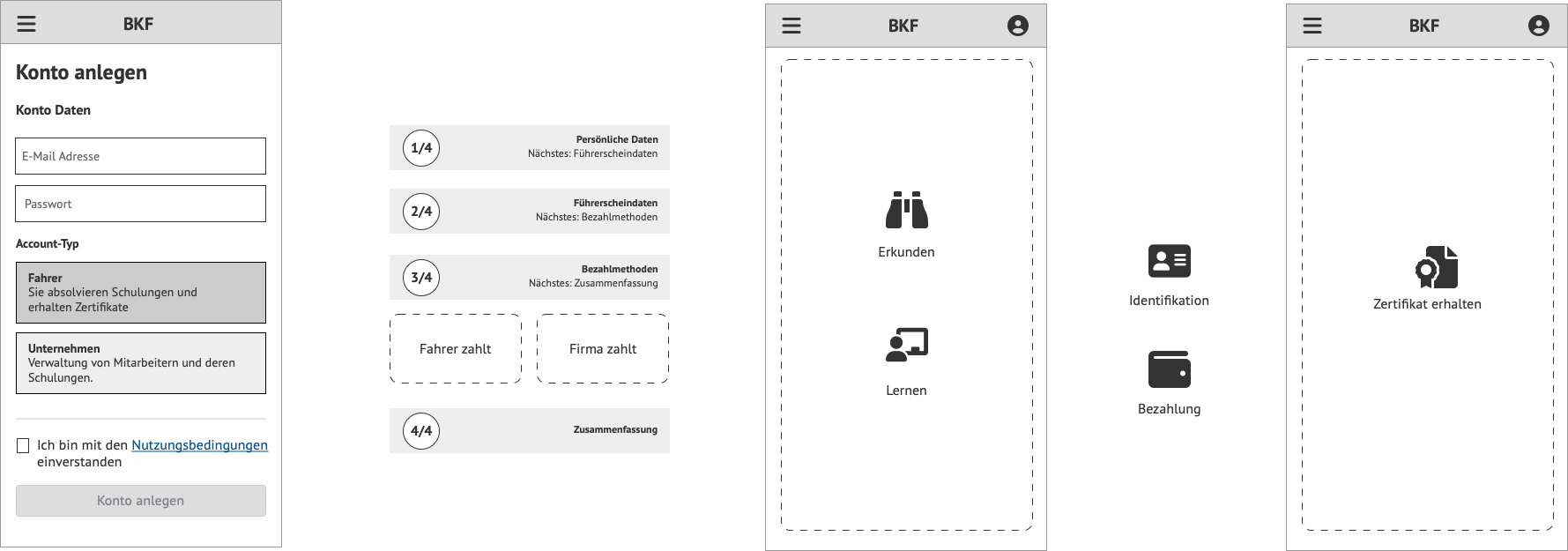
Get started quick: drivers can explore and complete training modules before payment or legally admissible authentication.
We added training module payment to the list of mandatory tasks just before the certification download. Employed drivers could request payment from their employer and start their training when most convenient, removing the need to front the bill or wait for the instalment to clear. Companies benefit from the process by keeping track of their costs and the educational status of their employees.
#3 Providing a convenient learning experience within the regulatory framework
While the service provided a high level of convenience, it also had to ensure that the learning process obliged existing laws that surpassed the requirement of unambiguous student identification.
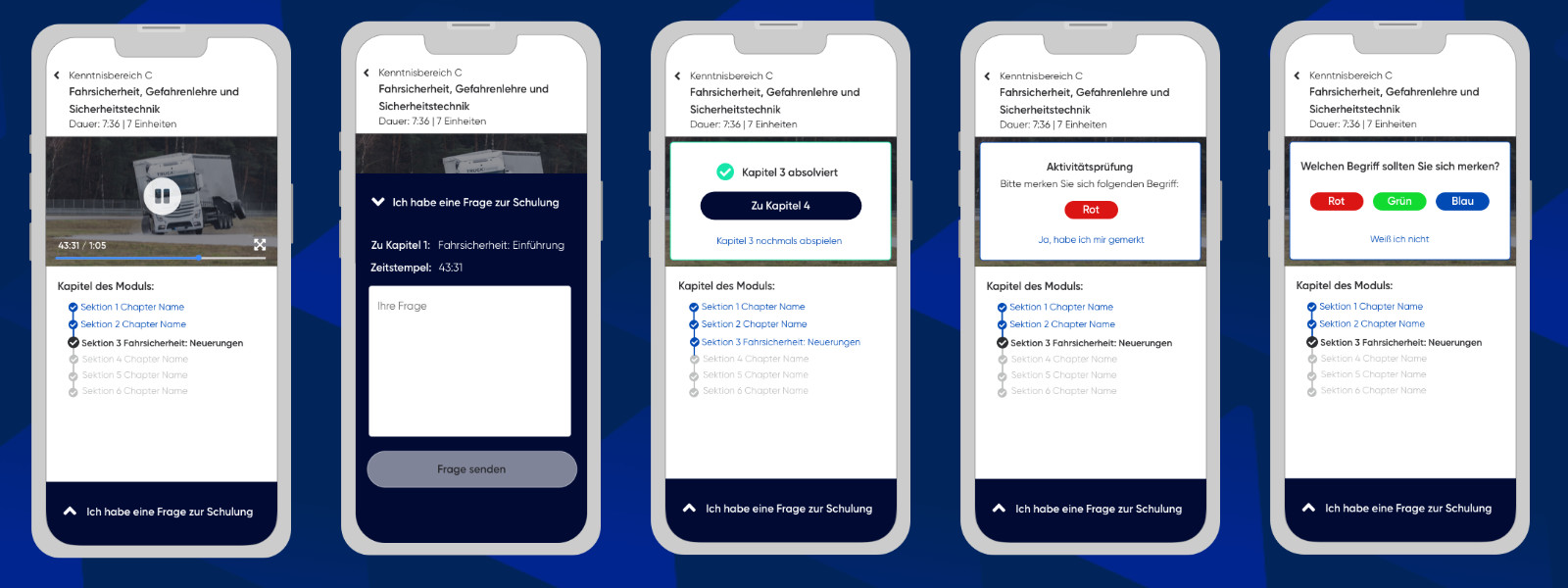
Students can ask questions during training and randomly receive attention tests.
The training modules of the platform consisted of video tutorials, just like the training process in driving schools. When attending a class at a driving school, students have the option to consult the tutors in case of questions. The watching eyes of the tutors also functioned as proof that students were participating and learning. Our solution had to provide the same options for students: ask questions and prove their participation.
We integrated solutions for both requirements as they were crucial to achieving state approval. Questions asked by participants during the module included video timestamps that showed the time of the question. Tutors could therefore understand the context of the question and provide helpful answers. Random, easy-to-answer attention tests were proof of student participation.
#4 Building a mobile-first Design System with pivot potential
When deciding which viewports to optimize for, one must keep user groups’ primary use cases in mind for the design to be successful.
As two of our user groups spend most of their working hours away from desks and with that away from laptops or desktop computers, both the interaction and UI Design are mobile-first. The interaction and interface had to be optimized for mobile devices so drivers could complete training from the road and managers could manage their employees’ module requests from anywhere.
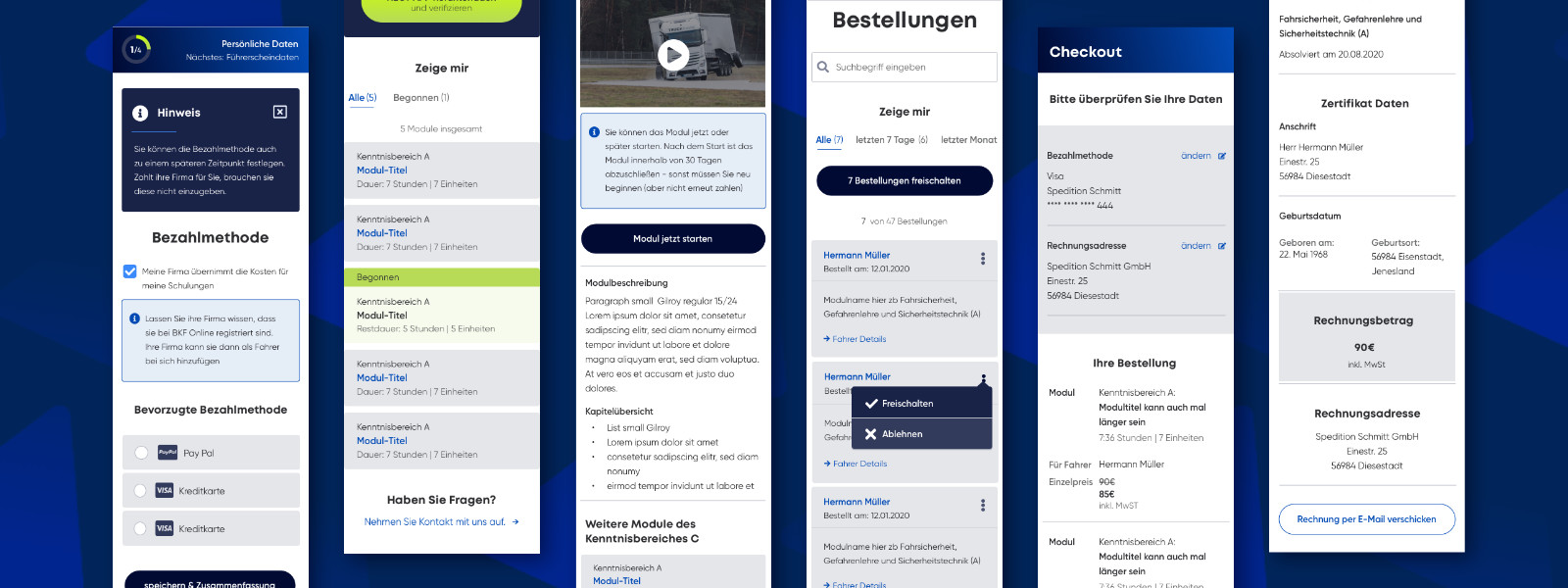
Mobile-first design organisms for user groups drivers and logistic managers. Drivers can easily onboard the system and start learning from the road. Logistics managers stay up to date with the learning schedules of their employees and can clear payments by the touch of a button.
Additionally, we were dealing with an unsettled legal situation in Germany during project production. We had to ensure that the functionality and design of the site would also work for other training options other than the intended bi-annual license renewal process.
A modular Design System helped us define scalable features which could work for any video e-learning module. We were also able to design user profiles to work in various complexity levels, so they could address different development stages of the e-learning platform, which had different needs.
Most challenging
We were creating an entirely new process, which needed to be approved by the state. Coming up with easy-to-use and legally admissible solutions was not an easy task. Making these solutions convincing enough to inspire the change of an existing process was the cherry on top of our mountains of challenges.
Most fun
While countries like Germany have been on the slow path of digitalization in the past, the pandemic was an event which enabled structural changes which might otherwise have taken years. Digitally transforming processes that result in time, energy, and money-saving AND can improve work/life balance are good digital transformation processes – at least in our book.
Interested in working with us?
We can support you in developing ideas and concepts and advise you on tricky UX challenges or frustrated users. Contact us and tell us more about your plans in a free introductory meeting.


